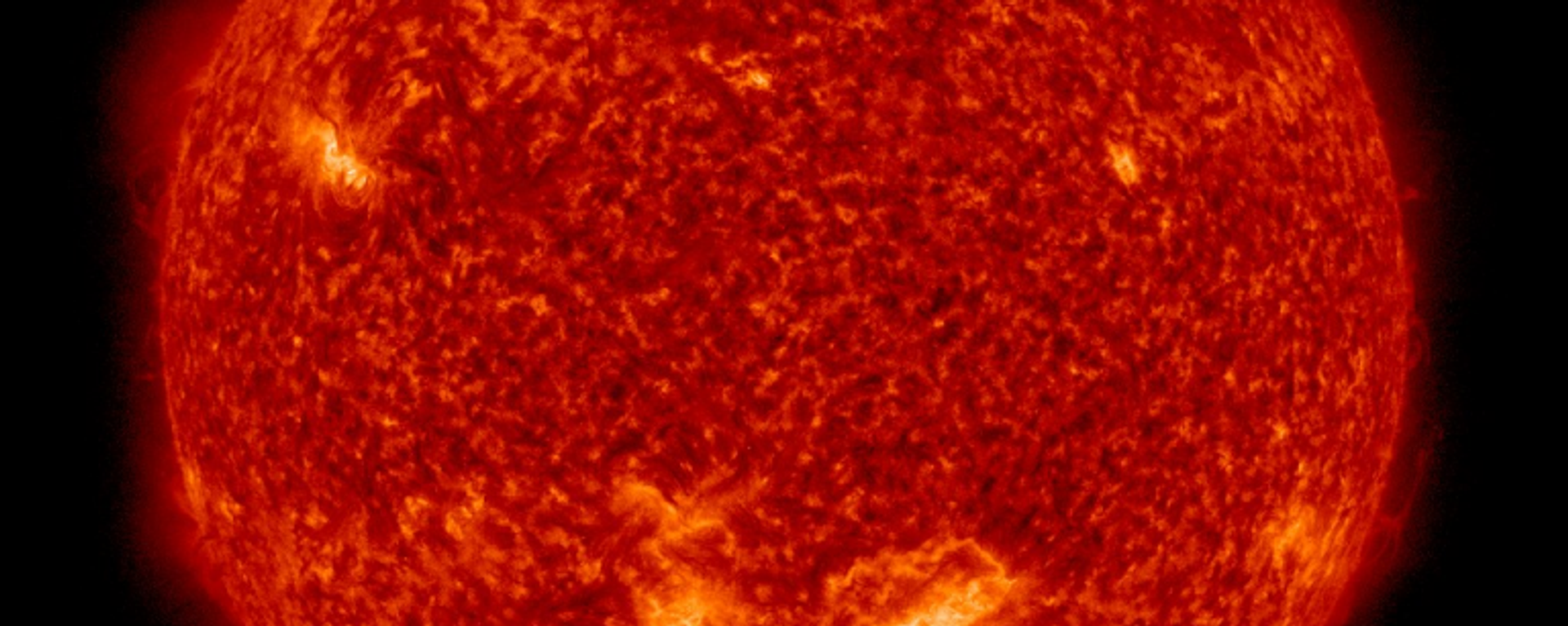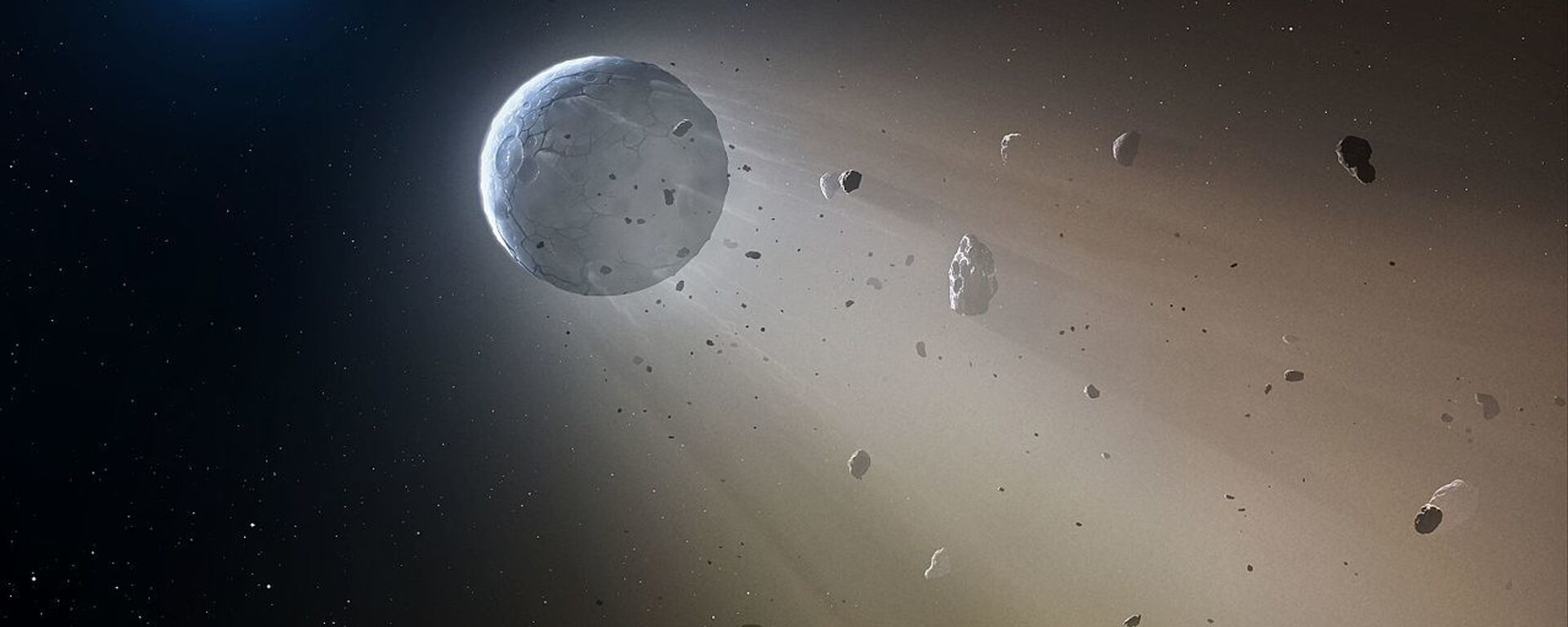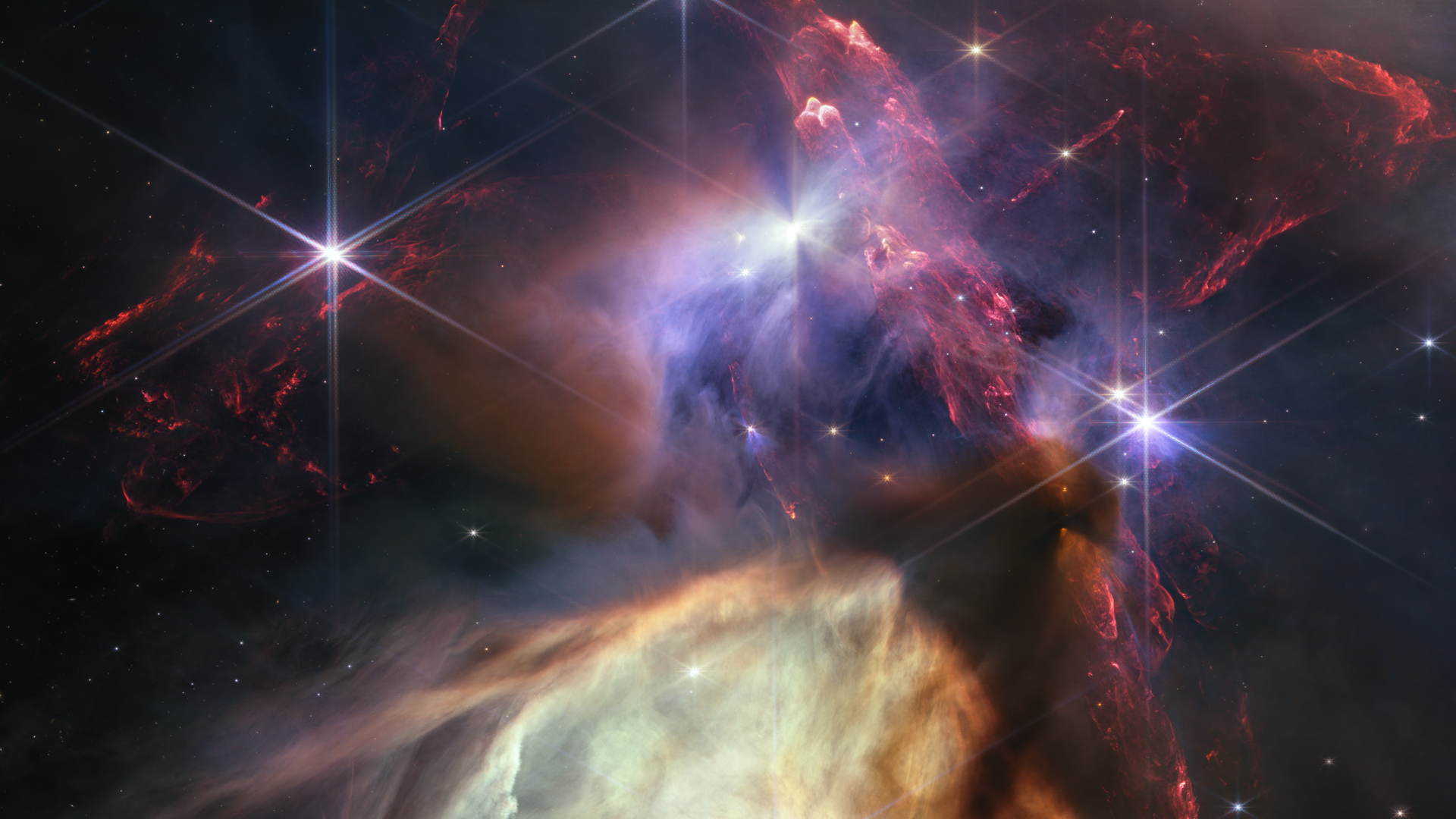https://sputnikglobe.com/20231128/can-a-rogue-star-end-planet-earth-as-we-know-it-1115246946.html
Can a Rogue Star End Planet Earth As We Know It?
Can a Rogue Star End Planet Earth As We Know It?
Sputnik International
A research team's study shows an intergalactic star's passage within 100 astronomical units of the Sun could disrupt Earth's orbit and habitability. Over 12,000 scenarios suggest a 95% chance all planets remain, though with altered orbits, highlighting our Solar System's resilience and unpredictability.
2023-11-28T13:44+0000
2023-11-28T13:44+0000
2023-11-28T13:44+0000
beyond politics
science & tech
society
mercury
solar system
earth
national center for scientific research (cnrs)
royal astronomical society
https://cdn1.img.sputnikglobe.com/img/07e7/07/0c/1111836540_0:0:2000:1125_1920x0_80_0_0_3a23332fce02e8b6176f88e034917c71.png
Stars are typically held in place within their galaxies by the force of gravity, allowing them to peacefully coexist with their celestial surroundings. However, on occasion, this delicate bond gets shattered. For instance, a star wandering too near to a huge black hole, can be violently flung into space as a rogue star. What would happen if such a star approached our very own Earth? While the chances are remote, they are not entirely nonexistent.Over billions of years, the Solar System has reached a stable state. Planets orbit steadily, and the Sun remains at the center. But the arrival of another star could upset this delicate balance. Earth, a small planet with only a minuscule fraction of the Sun's mass, relies heavily on solar gravitational pull. The introduction of a new star's gravity could drastically alter the Earth's fate.A recent study investigates the effects of a rogue star approaching within 100 astronomical units (1 AU = 149.6 million kilometers) of the Sun. The research team led by Sean Raymond and others from the Laboratoire d'Astrophysique de Bordeaux, CNRS (National Center for Scientific Research), and the Universite de Bordeaux will soon be published in the Monthly Notices of the Royal Astronomical Society.Our Solar System's predictable nature is not eternal. Earth's habitability is precarious, with the Sun becoming brighter over the next billion years. Within this timeframe, there's a 1 percent chance of a rogue star encounter. Such an event could nudge Earth out of its habitable zone. "Earth has about a billion years of habitable surface conditions remaining…While the orbital evolution of the planets is largely determined by secular and resonant perturbations…Passing stars can have a consequential influence on the planets' orbits," according to the paper.This paper examines different results using N-body simulations, which involve the Solar System's eight planets and a rogue star. By conducting 12,000 simulations with various scenarios, we discover that when a star comes within 100 astronomical units (AU) of the Sun, there is a strong likelihood of more than 95 percent that all planets will survive. Nonetheless, it's important to note that surviving doesn't necessarily mean the planets will remain unaffected. Their orbits may experience significant changes, which could potentially push some of them into the distant Oort Cloud.The simulations produce various outcomes. Some less dramatic results show that all planets are mostly unaffected or experience small disturbances. On the other hand, there are more extreme possibilities, such as Mercury colliding with the Sun, Earth and Venus crashing into each other, Uranus and Neptune being expelled, while only leaving Earth and Jupiter behind - or even just Jupiter in certain cases. A gloomy fate entails all eight planets being ejected in a single catastrophic event.Source: Future trajectories of the Solar System: dynamical simulations of stellar encounters within 100 AUThere's even a scenario where Earth is captured by the rogue star, leading to the Solar System's collapse, with Jupiter being the sole survivor.These simulations also consider the Earth's habitability post-encounter. Changes to the Earth's orbit could profoundly affect its climate. In certain scenarios, Earth could exist as a rogue planet for millions of years before eventually freezing over. On the other hand, if it gets captured by the rogue star, it might discover a fresh, habitable arrangement.Despite the range of possibilities, the likelihood of a 100 AU stellar flyby is minuscule. The study concludes that the most probable outcome is the preservation of all eight planets, though their orbits may slightly shift. This research not only underscores the resilience of our Solar System but also highlights the vast uncertainties of cosmic events and their potential impact on planetary futures."Despite the diversity of potential evolutionary pathways, the odds are high that our Solar System's current situation will not change," the paper concludes.
https://sputnikglobe.com/20231113/shrinking-star-new-findings-reveal-suns-surprising-size-reduction-1114935718.html
https://sputnikglobe.com/20231019/officials-detect-giant-zombie-star-on-the-run-1114305013.html
mercury
solar system
earth
Sputnik International
feedback@sputniknews.com
+74956456601
MIA „Rossiya Segodnya“
2023
Chimauchem Nwosu
https://cdn1.img.sputnikglobe.com/img/07e7/09/01/1113046371_0:99:1536:1635_100x100_80_0_0_9c5c627283eca931c39fe4852bbb301c.jpg
Chimauchem Nwosu
https://cdn1.img.sputnikglobe.com/img/07e7/09/01/1113046371_0:99:1536:1635_100x100_80_0_0_9c5c627283eca931c39fe4852bbb301c.jpg
News
en_EN
Sputnik International
feedback@sputniknews.com
+74956456601
MIA „Rossiya Segodnya“
Sputnik International
feedback@sputniknews.com
+74956456601
MIA „Rossiya Segodnya“
Chimauchem Nwosu
https://cdn1.img.sputnikglobe.com/img/07e7/09/01/1113046371_0:99:1536:1635_100x100_80_0_0_9c5c627283eca931c39fe4852bbb301c.jpg
rogue star, n-body simulation, solar system, astronomical units, earth's orbit, planetary habitability, cosmic events, gravitational interactions, planetary collision, star clusters, intergalactic stars, mercury, mars, venus, uranus, neptune, earth, saturn, oort cloud.
rogue star, n-body simulation, solar system, astronomical units, earth's orbit, planetary habitability, cosmic events, gravitational interactions, planetary collision, star clusters, intergalactic stars, mercury, mars, venus, uranus, neptune, earth, saturn, oort cloud.
Can a Rogue Star End Planet Earth As We Know It?
A research team has revealed that if an intergalactic star comes within 100 astronomical units of the Sun, it could disturb Earth's orbit and habitability. The team analyzed 12,000 scenarios, revealing a 95% likelihood that all planets would survive, albeit with changed orbits. This shows our Solar System's amazing resilience and unpredictability.
Stars are typically held in place within their galaxies by the force of gravity, allowing them to peacefully coexist with their celestial surroundings. However, on occasion, this delicate bond gets shattered. For instance, a star wandering too near to a huge black hole, can be violently flung into space as a rogue star. What would happen if such a star approached our very own Earth? While the chances are remote, they are not entirely nonexistent.
Over billions of years, the Solar System has reached a stable state. Planets orbit steadily, and the Sun remains at the center. But the arrival of another star could upset this delicate balance. Earth, a small planet with only a minuscule fraction of the Sun's mass, relies heavily on solar gravitational pull. The introduction of a new star's gravity could drastically alter the Earth's fate.
A
recent study investigates the effects of a rogue star approaching within
100 astronomical units (1 AU = 149.6 million kilometers) of the Sun. The research team led by Sean Raymond and others from the Laboratoire d'Astrophysique de Bordeaux, CNRS (National Center for Scientific Research), and the Universite de Bordeaux will soon be published in the Monthly Notices of the Royal Astronomical Society.

13 November 2023, 23:51 GMT
Our Solar System's predictable nature is not eternal. Earth's habitability is precarious, with the Sun becoming brighter over the next billion years. Within this timeframe, there's a 1 percent chance of a rogue star encounter. Such an event could nudge Earth out of its habitable zone. "Earth has about a billion years of habitable surface conditions remaining…While the orbital evolution of the planets is largely determined by secular and resonant perturbations…Passing stars can have a consequential influence on the planets' orbits," according to the paper.
This paper examines different results using N-body simulations, which involve the Solar System's eight planets and a rogue star. By conducting 12,000 simulations with various scenarios, we discover that when a star comes within 100 astronomical units (AU) of the Sun, there is a strong likelihood of more than 95 percent that all planets will survive. Nonetheless, it's important to note that surviving doesn't necessarily mean the planets will remain unaffected. Their orbits may experience significant changes, which could potentially push some of them into the distant Oort Cloud.
N-body simulations are crucial in physics and astronomy for modeling particle systems, predominantly affected by gravity. This method is essential for comprehending systems with gravitational interactions, including the solar system, star clusters, galaxies, and the overall structure of the universe.
The Oort Cloud represents the outermost boundary of our solar system, with its closest objects significantly further from the Sun than any others.
The simulations produce various outcomes. Some less dramatic results show that all planets are mostly unaffected or experience small disturbances. On the other hand, there are more extreme possibilities, such as Mercury colliding with the Sun, Earth and Venus crashing into each other, Uranus and Neptune being expelled, while only leaving Earth and Jupiter behind - or even just Jupiter in certain cases. A gloomy fate entails all eight planets being ejected in a single catastrophic event.
A list of the ten most probable scenarios involving the destruction of planets.
Planets | Probability of Destruction (%) | Likely Scenarios |
Mercury | 2.54 | Collision with the Sun |
Mars | 1.21 | Collision with the Sun |
Venus | 1.17 | Impacts another planet |
Uranus | 1.06 | Ejected |
Neptune | 0.81 | Ejected |
Mercury | 0.80 | Impacts another planet |
Earth | 0.48 | Impacts another planet |
Saturn | 0.32 | Ejected |
Mars | 0.27 | Impacts another planet |
Earth | 0.24 | Collision with the Sun |
There's even a scenario where Earth is captured by the rogue star, leading to the Solar System's collapse, with Jupiter being the sole survivor.

19 October 2023, 02:45 GMT
These simulations also consider the Earth's habitability post-encounter. Changes to the Earth's orbit could profoundly affect its climate. In certain scenarios, Earth could exist as a rogue planet for millions of years before eventually freezing over. On the other hand, if it gets captured by the rogue star, it might discover a fresh, habitable arrangement.
Despite the range of possibilities, the likelihood of a 100 AU stellar flyby is minuscule. The study concludes that the most probable outcome is the preservation of all eight planets, though their orbits may slightly shift. This research not only underscores the resilience of our Solar System but also highlights the vast uncertainties of cosmic events and their potential impact on planetary futures.
"Despite the diversity of potential evolutionary pathways, the odds are high that our Solar System's current situation will not change," the paper concludes.





